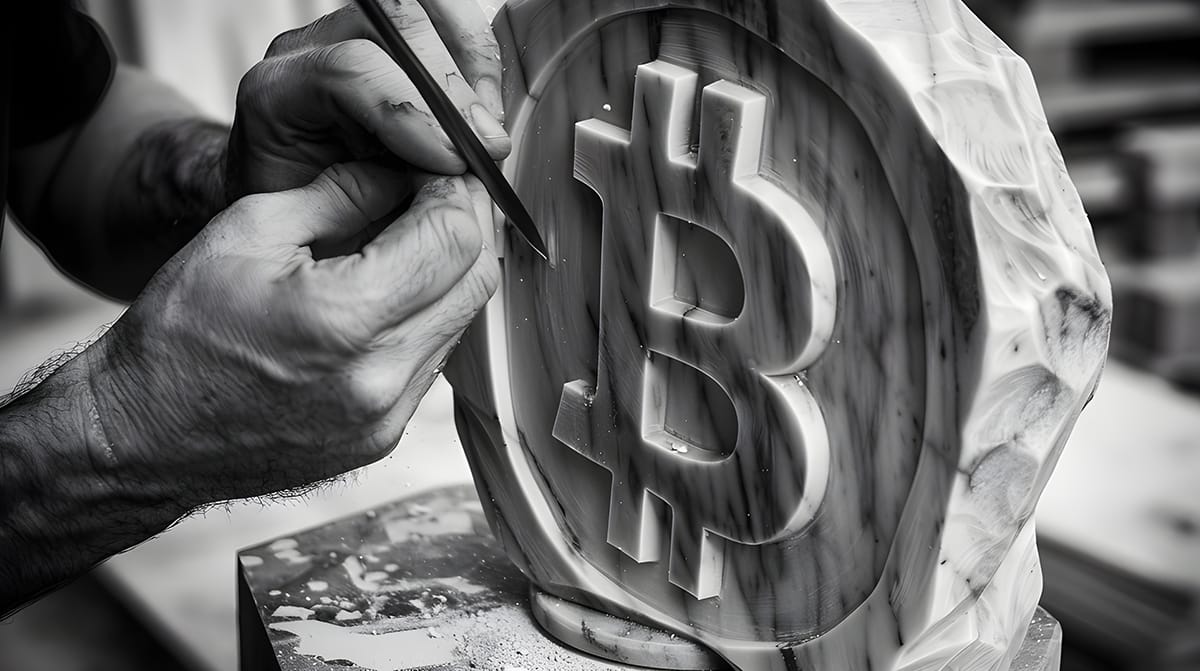Bitcoin's Proof-of-Work Explained


Theya is the world's simplest Bitcoin self-custody solution. With our modular multisig vault, you decide how to hold your keys.
Whether you want all your keys offline, shared custody with trusted contacts, or robust mobile vaults across multiple iPhones, it's Your Keys, Your Bitcoin.
Download Theya on the App Store.

The buzz around blockchains has been nothing short of sensational since the birth of Bitcoin in 2009. At its core, blockchain technology is a distributed ledger system that underpins various cryptocurrencies and decentralized networks. These ledgers, regardless of their specific implementation, serve as the backbone for recording all the transactions taking place within a specific network.
Bitcoin employs a Proof of Work (PoW) blockchain that records the transaction activity of the network every 10 minutes. Since its inception, the Bitcoin network has been assembling blocks of the most recent transactions on the network and chaining them to the previous block, forming an immutable ledger of all the network's activity.
The key to grasping the full potential of Bitcoin is a keen understanding of how Proof-of-Work functions. It can be helpful to think of Proof-of-Work as the guardian responsible for updating and maintaining the ledger of Bitcoin’s transactions and balances. Many refer to Proof-of-Work as a consensus mechanism since it ensures that every participant in the Bitcoin network is in consensus on the current state of the Bitcoin Ledger.
While there are various mechanisms for blockchains to agree on the state of the network’s ledger, Bitcoin’s Proof-of-Work has emerged as the apex consensus mechanism thanks to its heightened security and decentralization. Below we will explore how Proof-of-Work functions and why it is an integral piece of Bitcoin’s architecture.
How Does Proof-of-Work Function?
There are two key players in the Proof-of-Work consensus mechanism: miners and nodes.
Bitcoin miners compete to solve cryptographic calculations, propose new blocks to the network, and get rewarded with bitcoin for doing so. Bitcoin nodes verify the blocks the miners propose to ensure the transactions are valid and adhere to the rules of the Bitcoin network. This collaborative effort ensures no single entity can unilaterally dictate the state of the network, preserving the decentralization that is core to Bitcoin.
The Role of Miners
Bitcoin miners use specialized computer hardware (known as ASICs) that consume electricity to solve complex cryptographic calculations. They do this for the opportunity to be rewarded with new bitcoins. These complex calculations are known as hash functions. Miners compete against one another to be the first to determine a number called the nonce that will match the output of the hash function. The first miner to find the nonce, mines the block of transactions and proposes it to the nodes of the Bitcoin network. New blocks are proposed by miners roughly every 10 minutes. Bitcoin mining operations also come in various sizes, ranging from individuals mining Bitcoin to large-scale data centers housing thousands of ASICs.
The Role of Nodes
Nodes are computers running the Bitcoin software, each maintaining a separate copy of the blockchain. Anyone is allowed to run a node and participate in the Bitcoin network. Once a new block of transactions is proposed by miners, nodes on the Bitcoin network quickly verify it to ensure all transactions are legitimate and adhere to the rules of the network. Once a new block is accepted by the nodes, it is added to the blockchain and the miner who mined the block is rewarded with freshly minted bitcoins and transaction fees.
The Difficulty Adjustment
To keep the Bitcoin network’s heartbeat steady, a clever feature called the difficulty adjustment is in place. This feature ensures a new block of Bitcoin transactions is mined roughly every 10 minutes. When more miners join the network, the calculations become more challenging to solve. Conversely, if miners exit, it becomes easier to solve the hash functions. This dynamic ensures the Bitcoin network continues operating smoothly regardless of fluctuations in miner participation.
Proof-of-Work and Decentralization
Proof-of-Work and the balance of power between miners and nodes form the bedrock of Bitcoin’s decentralization, safeguarding its integrity and fortifying its security. The reward system—where miners dedicate computing power to mine new blocks and receive bitcoin— creates an incentive for honest participation and actions in the best interest of the network.
Decentralization lies at the core of Bitcoin’s value proposition. Without this fundamental characteristic, it cannot fulfill its role as a trusted and neutral form of money capable of serving the world. To further this point, Bitcoin’s decentralization is the key piece that makes Bitcoin censorship-resistant and non-discriminatory, ensuring that no single entity possesses the power to manipulate the rules of the network.It has become increasingly clear that Proof-of-Work is the only consensus mechanism that can maintain and nurture decentralization over time. This attribute is the linchpin in securing Bitcoin’s future, preserving its core principles and allowing it to further empower individuals around the world as time progresses.
In this exploration of Proof-of-Work, we’ve discovered the engine driving Bitcoin. As we look to the future, the ingenious design of Proof-of-Work will continue to stand as a testament to the power of decentralized networks. It is a technology that, while born from complex algorithms, serves a simple purpose: to put the power of money back into the hands of people.
Download Theya on the App Store.

